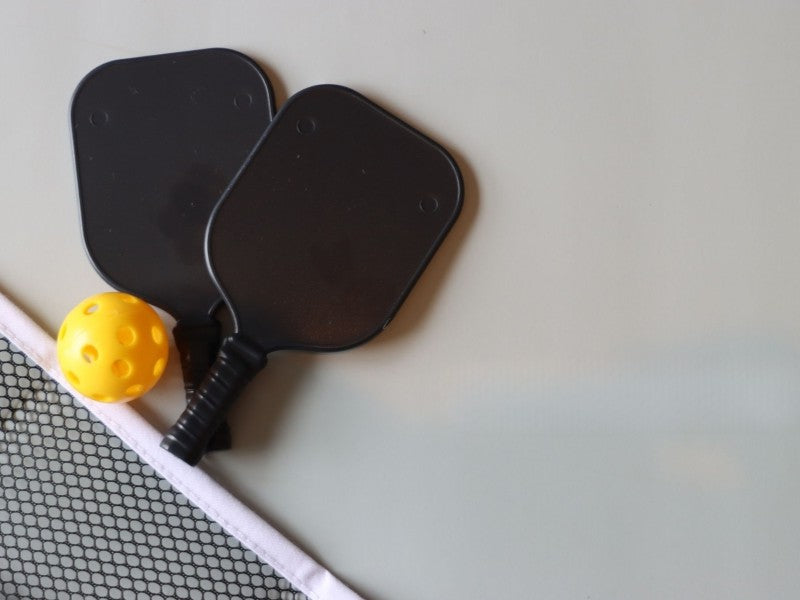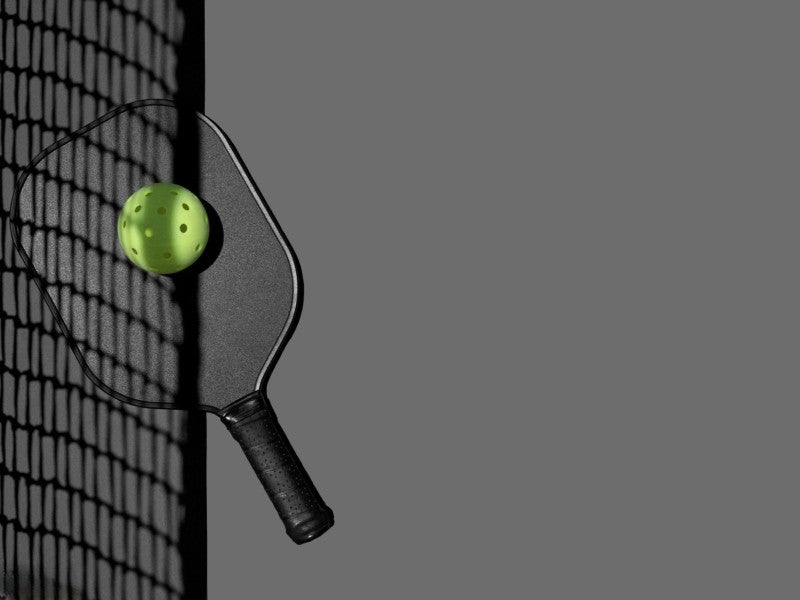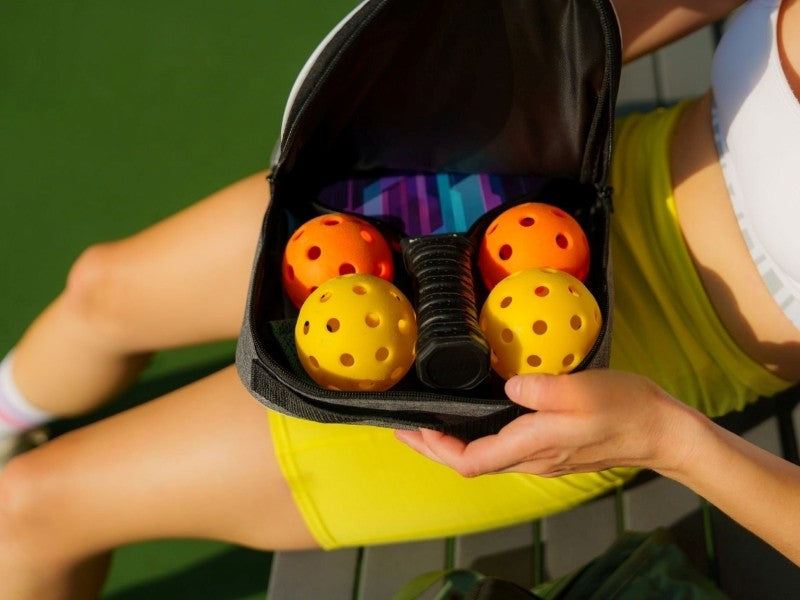Pickleball gear is built to be durable, but even high-quality nets and paddles have limits. Outdoor exposure, constant tension, heavy gameplay, and poor storage habits can quietly shorten their lifespan long before you expect it. In most cases, these problems are not caused by manufacturing flaws—they are the result of small maintenance issues that accumulate over time.
Quick Reference: The 8-Point Care Checklist
Before diving into the full guide, here is a simple checklist you can follow immediately. This sheet also works well as a court-side poster or a maintenance reminder for club staff.
Daily
· Check net height at the center and sidelines.
· Wipe dust or moisture off your paddle face and grip.
Weekly
· Inspect net tension, seams, and center strap condition.
· Clean paddle surfaces with a non-abrasive cloth; check for edge guard gaps.
Monthly
· Lubricate net post hardware and verify cable condition.
· Replace worn grips and check for paddle delamination or core soft spots.
Seasonal
· For outdoor nets, apply UV-protective care and check posts for rust.
· Rotate paddles in heavy-use environments to avoid overuse on a single surface.
This checklist alone can extend gear lifespan by 30–50% in most settings.
Pickleball Net Maintenance: Daily, Weekly, Monthly, and Annual Care
Nets operate under stress every minute they are in use. Proper care can prevent most problems, from sagging to corrosion. This section provides a structured maintenance plan suited for players, facility managers, and event organizers.
Daily / Pre-Play Checks
These actions take less than a minute but significantly reduce long-term damage:
· Confirm net height: 36 inches at the sidelines, 34 inches at the center.
· Look for obvious sagging: Early detection prevents overstressing the cable.
· Check center strap connection: Loose straps cause uneven tension that speeds up tearing.
· Look for moisture: Wipe off rain or dew before play to avoid mildew and premature fabric breakdown.
Weekly Net Maintenance Tasks
Weekly tasks prevent small issues from turning into structural failures.
Clean the Headband and Net Surface
Dust, debris, and sunscreen residues gradually weaken material fibers. A simple wipe-down with mild soap and water is enough.
Check Cable Tension
The cable should be snug but not overstressed. If the net is sagging despite proper height, the cable may be slipping or fatigued.
Inspect the Side Posts and Attachments
Look for:
· Rust spots
· Loose bolts
· Hooks beginning to bend
· Worn adjustment mechanisms
A small correction early can save a full replacement later.
Verify the Center Strap Condition
A frayed or stretched strap can no longer maintain the 34-inch center height. Replace at the first sign of tearing.
Monthly Net Maintenance Tasks
Once a month, perform a deeper inspection.
Measure Net Height with Tools
Use a tape measure or net-measuring stick to check for:
· Persistent sagging
· Uneven sideline height
· Frame deformation in portable systems
Inspect Cables and Replace When Needed
Steel cables fatigue after thousands of tension cycles.
Look for:
· Exposed strands
· Kinks
· Fraying
· Loss of elasticity
Lubricate Metal Components
Apply a light, non-staining lubricant to:
· Winch mechanisms
· Cable hooks
· Post hardware
· Portable frame joints
This prevents rust and reduces the effort required for tension adjustments.
Check for Fabric Damage on the Net Mesh
Small holes expand quickly under tension. Reinforce early or plan replacement.
Seasonal and Annual Maintenance
For outdoor courts, seasonal care is essential.
UV Protection for Outdoor Nets
The headband and net mesh degrade faster under direct sunlight.
Use:
· UV-safe cleaners
· Protective sprays designed for outdoor textiles
· Shade covers when courts are unused
Rust Prevention
Clean and inspect posts every 3–6 months.
Apply corrosion inhibitors if your courts are in humid or coastal environments.
Winter Storage
If your region freezes:
· Store portable nets indoors
· Loosen tension on permanent nets
· Remove standing water from posts or sleeves
Annual Replacement Considerations
Not everything must be replaced yearly, but the following often require annual review:
· Center straps
· Cable systems
· Portable frame joints
· High-traffic competition nets
Quick Repairs and When to Replace
Common Quick Fixes
· Sagging net: tighten or reposition the center strap.
· Bent hooks: reshape with pliers if only minimally deformed.
· Small mesh tears: stitch or patch before they grow.
Replacement Indicators
Replace the net when you see:
· Deep cracks in posts
· Cable fraying
· Mesh tearing beyond repair
· Irreversible sagging even with correct tension
Maintaining Portable Nets
Portable nets require additional care because they are folded, carried, and reassembled often.
Key tips:
· Use padded storage bags to protect frame joints.
· Avoid dragging the frame on hard surfaces.
· Clean sand/dust from joints before storing.
· Do not keep the net fully tensioned while in long-term storage.
· Store horizontally to avoid frame warping.
With proper care, a portable net can last three to five years—longer if used indoors.

Pickleball Paddle Maintenance: Daily, Weekly, Monthly, and Annual Care
Paddles age gradually, and many players don’t notice performance loss until it becomes significant. Regular care helps you maintain consistent control, power, and feel.
Daily / After-Play Care
Wipe the Paddle Surface
Dust, sweat, and sunscreen reduce traction and may eventually weaken certain face materials.
Use:
· Microfiber cloth
· Gentle water-based cleaner (no alcohol or solvents)
Dry the Grip Area
Moisture trapped under the grip accelerates bacteria growth and breaks down adhesive layers.
Quick Damage Scan
Check for:
· New cracks
· Edge guard separation
· Loose grip wrap
Catch problems early to avoid irreversible damage.
Weekly Paddle Care Routine
This keeps your paddle performing consistently.
Deep-Clean the Paddle Face
Different materials require different approaches:
· Graphite: soft cloth and water only
· Composite: mild soap is safe
· Textured fiberglass: gentle circular cleaning to avoid damaging the texture
Avoid abrasive pads or high-pressure water.
Check Edge Guard Condition
A loosened edge guard exposes the paddle core and increases risk of delamination.
You can temporarily secure it with edge tape until it can be professionally repaired.
Evaluate Grip Wear
Replace the grip when you see:
· Flattening
· Tears
· Slipperiness
· Thread separation
Fresh grips not only feel better but reduce wrist strain.
Monthly & Seasonal Paddle Checks
Test for Core Soft Spots
Tap the paddle lightly with your knuckle.
A dull, flat sound indicates potential core deterioration.
Check for Delamination
Signs include:
· Sudden loss of control
· Unexpected power spikes
· Hollow sound
· Visible air pockets
Delamination often requires replacement.
Seasonal Storage Check
Avoid leaving the paddle in:
· Hot car trunks
· Damp garages
· Direct sunlight for extended periods
Temperature swings cause warping and face separation.
Environmental Factors That Affect Longevity (and How to Manage Them)
Environmental exposure is one of the most overlooked contributors to equipment wear. Even if you take excellent care of your net and paddles, the environment you play in can accelerate or slow down aging. Understanding how climate, temperature, humidity, and location influence material fatigue helps you prevent avoidable damage.
Sunlight and UV Exposure
UV radiation weakens nearly every component of a pickleball net, from the vinyl headband to the woven mesh. Over months of outdoor play, constant sunlight causes:
· Headband cracking
· Mesh brittleness
· Color fading
· Faster structural fatigue
For paddles, UV exposure can dry out grips, weaken adhesives, and reduce surface integrity.
How to Protect Your Gear
· Use UV-safe cleaners and periodic UV-protection sprays on outdoor nets.
· Apply grip covers or store your paddle under shade between games.
· If possible, rotate nets between sunny and shaded courts.
· Store portable nets indoors after each session.
Heat and Temperature Fluctuations
Extreme temperatures—especially heat—are particularly damaging to pickleball paddles. Many players unknowingly leave paddles in a hot car trunk, where temperatures can exceed 60–70°C (140–158°F). This can cause:
· Core warping
· Delamination
· Glue breakdown
· Grip degradation
Nets can also stretch or shrink slightly with temperature shifts, affecting long-term tension stability.
Preventive Actions
· Never store paddles in cars for extended periods.
· Use well-ventilated storage rooms.
· Loosen net tension before winter or off-season periods.
· Use padded or insulated paddle sleeves if your climate is extreme.
Moisture, Rain, and Humidity
Moisture is a silent destroyer. Prolonged humidity or repeated exposure to rain accelerates:
· Rust on posts and frame joints
· Mold growth on nets
· Paddle grip rot
· Adhesive failure on edge guards
Best Practices
· Dry nets after rain; do not leave them wet overnight.
· Store portable nets in breathable—not fully sealed—bags.
· Wipe down paddles thoroughly and replace grips that retain moisture.
· Avoid storing equipment in damp garages or under decks.
Court Surface Conditions
Dusty or sandy courts cause abrasion to paddle surfaces and wear down net headbands more quickly. Indoor hardwood courts are gentler, but asphalt and concrete environments introduce more surface friction.
How to Respond
· Clean paddle faces more frequently in dusty environments.
· Use protective edge tape to avoid asphalt impact damage.
· Periodically rinse net bands to remove abrasive particles.

Storage Best Practices for Long-Term Durability
How you store your equipment is just as important as how you use it. Many issues—warping, rust, sagging, mildew—stem from storage mistakes rather than gameplay.
Paddle Storage Rules
Do:
· Use a padded paddle cover for daily protection.
· Keep paddles indoors, away from heat and humidity.
· Store paddles vertically or flat to avoid pressure on the face.
Don’t:
· Leave paddles in car trunks.
· Stack paddles under heavy objects.
· Expose paddles to steam rooms, wet basements, or direct sunlight.
Net Storage Rules (Permanent Nets)
For permanent outdoor nets:
· Slightly loosen tension when courts won’t be used for several days.
· Apply rust inhibitors on metal hardware every few months.
· Periodically wash the headband to remove mold or soil buildup.
· Use protective court windscreens where appropriate to reduce strain.
Net Storage Rules (Portable Nets)
Portable nets require more structured storage because regular folding stresses the frame.
Recommendations:
· Store them in padded bags with frame pieces separated.
· Keep the net fabric rolled—not folded—to avoid creases.
· Avoid over-tight tension when storing.
· Keep in dry, shaded indoor environments.
When to Upgrade Your Gear: Performance and Safety Indicators
Even with perfect maintenance, equipment eventually reaches the end of its useful life. Knowing when to upgrade prevents poor performance and potential injuries.
When to Upgrade Your Paddle
Upgrade when you notice:
· Persistent dead spots
· Visible delamination
· Performance decline despite proper cleaning
· Cracked handle or internal rattle
· Textured face worn smooth (affects spin and control)
If your skill level has increased significantly, it may also be time to move to a different weight or material configuration.
When to Upgrade Your Net
Consider upgrading your net when:
· The cable repeatedly slips or won’t hold tension
· Mesh damage appears in multiple locations
· Posts corrode or lean despite reinforcement
· Constant height adjustments are needed
· The net sags even when newly tensioned
For portable nets, frame wobble or joint looseness is a major sign that replacement is overdue.
Safety Considerations
Damaged equipment can pose safety risks:
· Loose edge guards can cause unpredictable paddle bounce
· Broken posts or unstable nets may collapse during play
· Delaminated paddles can create dangerous ball rebound patterns
Regular inspections ensure safe play for all levels.
Final Checklist & Summary: Your Long-Term Care Framework
To close this guide, here is a full, actionable maintenance framework you can follow year-round.
Daily
· Wipe paddle face and grip
· Check net height
· Remove moisture from gear
Weekly
· Deep-clean paddles
· Check cable tension
· Inspect edge guards and grips
Monthly
· Lubricate net hardware
· Inspect cables
· Test paddle bounce and sound
· Check for delamination
Seasonal
· Apply UV protectants
· Rotate equipment
· Store nets correctly
· Replace grips
Annually
· Evaluate for upgrades
· Replace worn straps and cables
· Schedule facility-wide inspections









Leave a comment
This site is protected by hCaptcha and the hCaptcha Privacy Policy and Terms of Service apply.